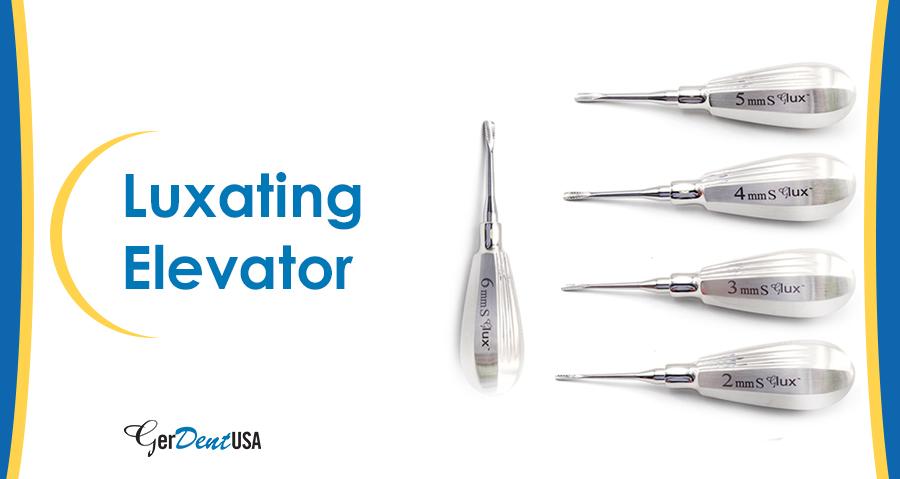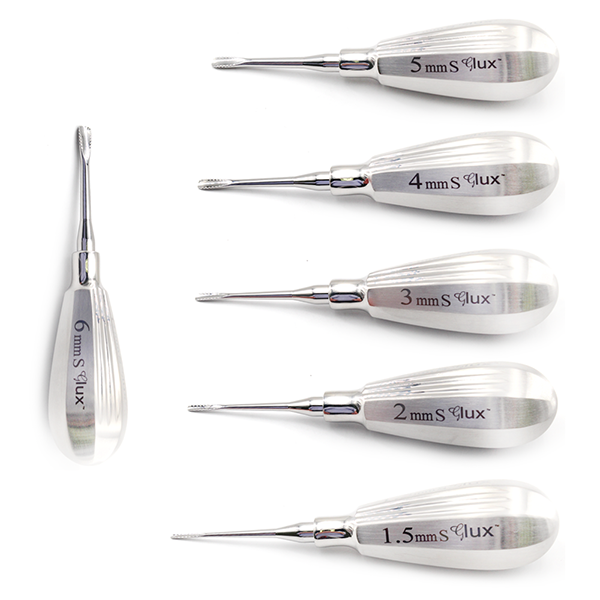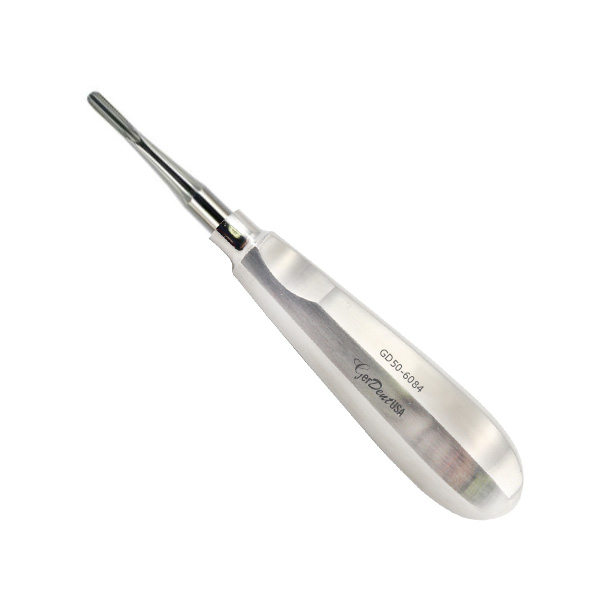Luxating elevator Instruments are used with Forceps for the extraction of teeth. The luxating elevators are handheld tools that come into use to extract teeth by making the teeth mobile. These dentistry instruments are sharp, effective, and durable.
Like all handheld tools, the luxating elevators include a handle, shank, and blade/ working end. The operator grasps the handle during use. The shank is that part of the instrument that connects the handle and the working end. The instrument's blade engages the crown or root of the tooth and delivers force to extract the tooth out of its socket. The working side of the blade is either concave or flat.
Indications for Use
The Luxating elevators are used for the extraction of broken-down teeth. These instruments also use luxating and elevating teeth/ roots that cannot be grasped by forceps. E.g., carious teeth, malposed teeth, impacted teeth, or heavily filled teeth.
These instruments loosen the teeth before the application of forceps. Luxating elevators also split the teeth that have grooves in them. These instruments come into use for removing small amounts of bone to create application points for forceps or the removal of interseptal bone. Luxating elevators also come into use for removing sectioned roots, old roots, or fractured roots.
The luxating elevators are dental surgical instruments that come with straight and curved blades. The blades are serrated to provide extra strength to the tool. Differently sized blades are available for the extraction of various teeth in the mouth. Dental luxating instrument sets with short handles are also available for ease of practitioners
Important Points to Consider While Using the Luxating Elevators
Patient protection is very important. Elevators produce huge force during use, and the patient's jaws need support while performing the procedure. Hence, support is given to the patient's jaws to avoid dislocation of the mandible.
Other soft tissues of the oral cavity like the tongue, cheeks, and lips need to be protected against potential damage. There is a high chance of instrument slippage during use. This is extremely important while using a wedge-type elevator.
Protection of the patient and soft tissues is best accomplished by controlling the direction of force, so the force is directed into the alveolar bone and nowhere else. Other than that, surround the immediate area of extraction with fingers.
In the maxilla, use the index finger and thumb to hold the alveolus while extraction. For the mandible, the first and second fingers hold the alveolar bone, while the thumb is secured below the mandible for support. The thumb in this position offsets the force that is directed downwards to prevent dislocation of the mandible. The placement of fingers buccally, lingually, and palatally gives the operator the sense of force direction around the tooth being extracted and adjacent teeth that are not extracted.
Another essential thing to consider is never using the adjacent tooth as the fulcrum while using the Luxating elevators. Having fingers around the extraction site also means that if the elevator slips, the damage will be to the operator's fingers.
Some Hazards of Using the Luxating Elevators:
The luxating elevators may damage, or worse, extract the adjacent teeth. There is also a possible chance of the fracture of the maxilla or mandible during Elevator use, and the alveolar process is also at potential risk of fracture during use of the luxating elevators.
The accidental penetration of the elevator inside the maxillary Antrum is also possible. There are also chances of forcing a tooth or root into the maxillary antrum. Other than that, there is a chance of forcing the mandibular molar roots into the lingual plate or Pterygomandibular space.
Things to Consider While Using the Elevators:
It is essential never to use the adjacent tooth as the fulcrum. This will cause the adjacent teeth to become mobile. Never use the buccal or the lingual plate at the gingival line as the fulcrum for extraction. Ensure that you are using finger guards for the protection of the patient.
Also, ensure that you are using controlled forces in the correct direction to avoid trauma or accidental penetration of the instrument. Always try and elevate from the mesial side of the tooth. Finally, while cutting through the interseptal bone, do not engage the adjacent tooth or root. Otherwise, it may be luxated out of its socket.
How to use the Luxating elevators?
Three principles are generally applied for using luxating elevators: the lever, wedge principle, and the wheel and axle principle. The lever principle is the most commonly used one out of all three.



